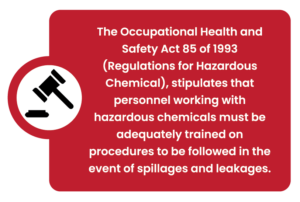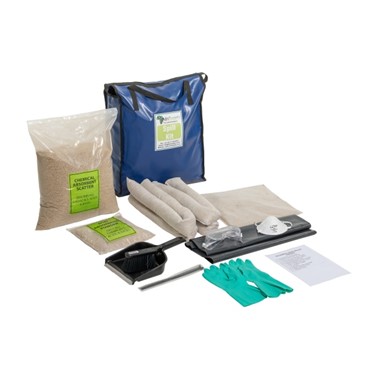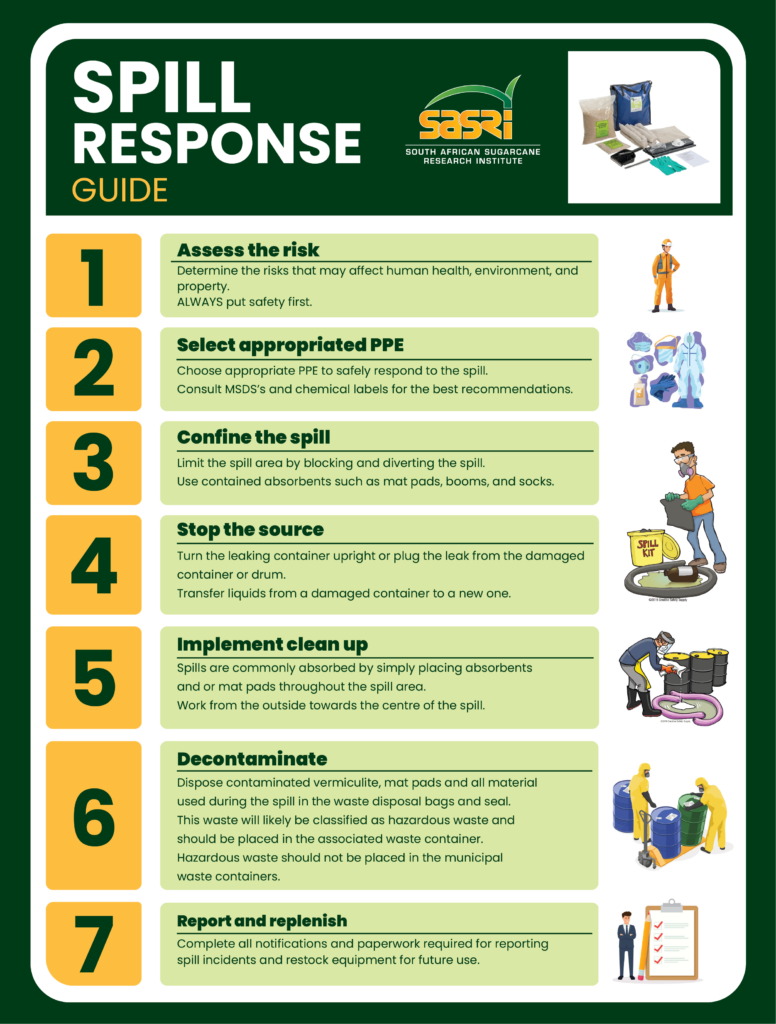In the agricultural and agrochemical environments where hazardous chemicals and oils are handled, prioritising the safety of both workers and the environment is critical. A crucial tool for minimising risk of exposure and efficient management of hazardous substance spills, is the spill kit. This ready-made collection of items is designed to contain and clean up spills while reducing further contamination and exposure of hazards.
A spill kit should only be open when a spill has occurred and should be restocked following the incident. Regular checks should be done to ensure that the contents are viable and in working condition.
Most importantly, all personnel working with hazardous substances should be provided with training to ensure that they:
- are familiar with the items in a spill kit;
- understand the purpose and how to use each item correctly;
- understand the protocols; and
- are exercising best practices when handling spillages.

Several types of spill kits are on the market and these kits are differentiated based on the type of spills they are designed to contain. Spill kits may be packaged in duffle bags, wheelie bins and even trailers. A standard spill kit will include Personal Protective Equipment (PPE) absorbent material, and hazardous waste bags.
What is in a spill kit?
- Personal protective equipment (PPE) – gloves and goggles for safety and protection.
- Containment booms/socks – an absorbent barrier placed around the spill area to contain and prevent the spill from spreading.
- Absorbent materials – items include pillows, mat pads and vermiculite – designed to absorb the spill safely and effectively.
- Dustpan and broom – used solely for chemical spills.
- Waste disposal bags and sealing ties – used to hold all the contaminated products and ensure the collected spill will not spill further.
- Instructions on how to use the spill kit and an inventory list which should be used regularly to check and restock the spill kit.
Location of the spill kit
Areas that are prone to hazardous leaks and spills such as chemical stores should have a spill kit that is easily accessible to all staff. It is also vital that that the spill kit is clearly labelled. Furthermore, a spill kit should be carried in vehicles whilst transporting chemicals to provide first response in case of a spill.
Seven steps to a spill response
The SASRI Spill Response Guide outlines
seven important steps to follow in the event
of a spill.


